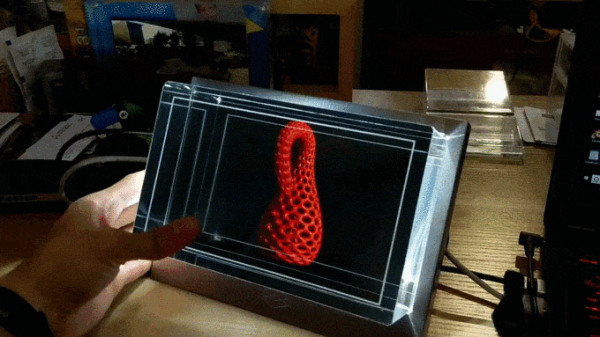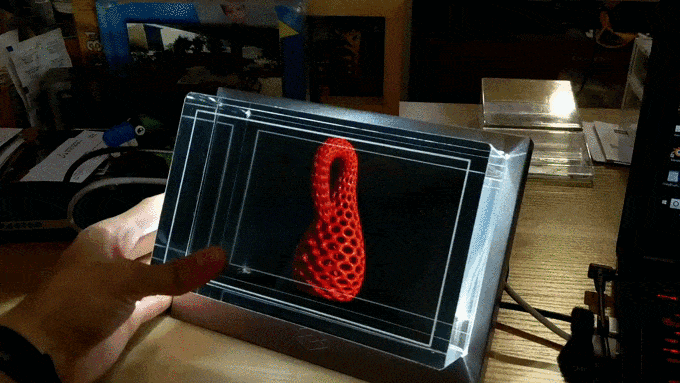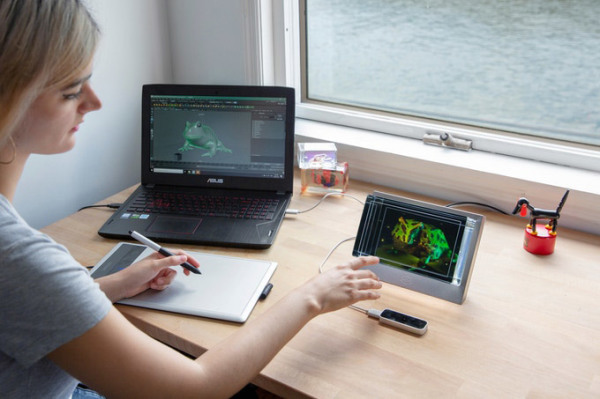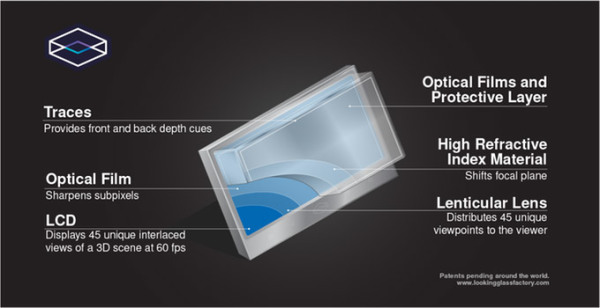[09:26 Sun,29.July 2018 by Thomas Richter] |
The Kickstarter campaign for the holographic display "The Looking Glass" is already successfully financed after a short time - probably because of the rather convincing looking examples, which really give hope for a three-dimensional desktop display, which can be viewed without a headset or 3D glasses.  The team has already successfully completed  The Holo display is available in two sizes: a small version with 8.9" (22.6cm) and a larger version with 15.6" (39.6cm). In the considerable thickness of the transparent plastic screen, it resembles volumetric 3D displays without being one. Via SDK interactive apps with all possible controllers on the market (like the Leap Motion Controller, Nintendo Switch Joy-Controllers, Intel RealSense, Microsoft Kinect, Xbox Game Controller) can be realized, e.g. to manipulate a 3D object in the display by hand (to rotate, scale or transform it). 3D objects can be imported in the usual formats from programs like Maya, Blender, Solidworks, Z-Brush, AutoCAD or Cinema4D.  Looking Glass as desktop holo display The display uses a relatively conventional 3D technology, namely lenticular lenses in front of a normal LCD panel - in the case of Looking Glass just as many different perspectives are made possible by 45 levels - enough to get a comprehensive 3D impression and to view an object fluently and without breaks from different perspectives. In contrast to a real holodisplay, however, it is not possible to see the 3D object from all around (360°) but only from an angle of 50° - but the videos give a good impression of the three-dimensionality of the image. The display is connected via HDMI (and USB for power) and requires a powerful GPU - at least one Nvidia GTX 1060. Unfortunately, no information is given about the resolution, but due to its principle it will probably be rather low - instead of one picture 45 individual pictures - one for each perspective - have to be calculated and displayed simultaneously and this up to 60 times per second for moving pictures.  The Looking Glass" will be released in December 2018, a special beta version is scheduled to be available as early as September - the price ranges from around 400 dollars for the small holodisplay to 2,000 dollars for the large one. There are also interaction bundles with the Leap Motion Controller. Interestingly, Team Kickstarter does not consider it necessary for financing (the project had already been sufficiently financed before), but as the best sales platform where exactly the right target audience can be reached. deutsche Version dieser Seite: Das erste (quasi) holographische Display für den Desktop: The Looking Glass |




